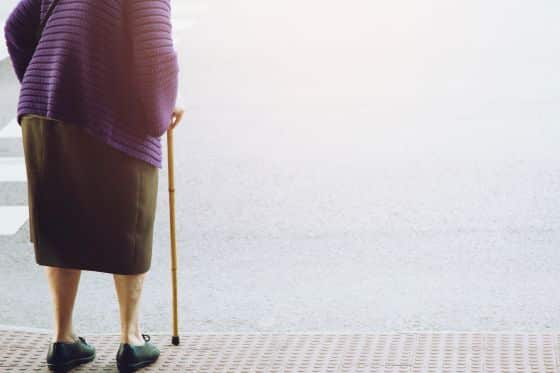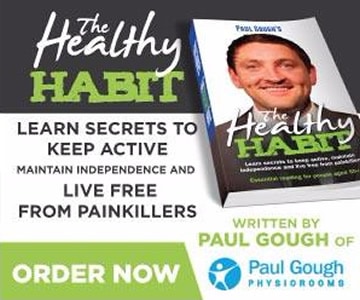As we age, many things change—but losing your balance or feeling unsteady should not be something you simply accept. One of the most common challenges older adults face is maintaining confidence in their movement. The fear of falling can quietly creep in, making once-simple activities—like going for a walk, climbing stairs, or even standing in the kitchen—feel overwhelming.
But here’s the truth: you can take action to regain control, improve your balance, and continue living independently.
At Savoy Therapy, we help older adults every day who feel like their stability is slipping. Many of them come to us after a fall or close call, unsure of what to do next. Our message is always the same: It’s never too late to improve your balance, build strength, and move with confidence again.
In this guide, we’ll walk you through how to improve balance after 65—with practical, expert-backed steps you can start today.
Why Balance Declines After 65
Balance is a complex system that involves your muscles, joints, eyes, inner ear, and brain. As we age, several things can cause this system to weaken:
- Muscle loss (sarcopenia)
- Decreased flexibility and joint mobility
- Slower reflexes and coordination
- Changes in vision and hearing
- Medical conditions such as arthritis, diabetes, or Parkinson’s disease
The good news? Every one of these challenges can be addressed with the right exercises, strategies, and support.
How to Improve Balance After 65: Step-by-Step Guide
1. Strengthen Your Lower Body
The muscles in your legs, hips, and core play a crucial role in keeping you steady. Without strength in these areas, even small missteps can lead to a fall.
Try this exercise:
Sit-to-Stand
- Sit in a sturdy chair, feet flat on the floor
- Cross your arms or keep them on your thighs
- Slowly rise to a full standing position
- Lower back down with control
- Repeat 10 times
This everyday movement mimics real-life tasks and helps restore functional strength.
2. Focus on Simple Balance Exercises
Balance, like any skill, improves with practice. Daily balance exercises can train your body to react more quickly and stay upright—even on uneven surfaces.
Try this exercise:
Single-Leg Stand
- Stand behind a chair and hold the backrest for support
- Lift one foot off the floor
- Hold the position for 10–30 seconds, then switch legs
- Repeat 2–3 times per side
This movement strengthens your ankles and improves your brain-body coordination.
3. Move Every Day (Even Just a Little)
You don’t have to run marathons. A daily walk, light stretching, or a few minutes of movement can go a long way. The key is consistency. Inactivity leads to stiffness, weakness, and more balance challenges.
Ideas to get moving:
- Walk around your home during commercials
- Join a chair yoga or gentle movement class
- Stretch your calves and hamstrings daily
The more you move, the stronger and more mobile your body becomes.
4. Strengthen Your Core
Your core (abdominal and back muscles) is like the foundation of a house—it stabilizes everything else. Weak core muscles lead to instability and poor posture, both of which increase your risk of falls.
Try this exercise:
Seated Knee Lifts
- Sit in a sturdy chair
- Slowly lift one knee toward your chest
- Hold for a few seconds, then lower
- Alternate legs and repeat 10–15 times
Even this small movement activates key muscles and improves your trunk control.
5. Make Your Home Safer
More than 50% of falls happen at home—usually in places we think are safe. Fall-proofing your home is one of the smartest ways to protect yourself.
Start here:
- Remove loose rugs or clutter from walkways
- Install grab bars in the bathroom and near stairs
- Use nightlights to brighten hallways
- Ensure you have non-slip mats in the kitchen and bathroom
These small changes can make a big difference in your safety and peace of mind.
6. Review Medications and Vision Regularly
Certain medications can cause dizziness or drowsiness, increasing your fall risk. Vision changes can also affect your depth perception and coordination.
Talk with your doctor or pharmacist about any side effects you’ve noticed. Get your eyes checked at least once a year. Staying on top of your health gives you a strong foundation to build on.
7. Stay Hydrated and Eat Well
Dehydration and poor nutrition can cause low energy, muscle cramps, or even sudden drops in blood pressure—all of which affect balance.
Make sure you’re drinking water throughout the day and eating meals that include protein, healthy fats, and plenty of fiber. Your body needs fuel to stay strong and steady.
8. Don’t Let Fear Hold You Back
Many older adults begin avoiding activity because they’re afraid of falling. Ironically, this only makes the problem worse. The less you move, the more your muscles weaken.
Confidence grows with movement. Working with a physical therapist can help you regain that confidence in a safe, guided way.
9. Practice Posture and Breathing
Standing tall with your shoulders back and head lifted improves your balance right away. Practicing deep, steady breathing while moving also keeps your body relaxed and responsive.
Try standing against a wall with your heels, hips, and shoulders touching. Practice inhaling deeply through your nose and exhaling through your mouth. Even a few minutes each day can reset your posture and calm your nervous system.
10. Get Professional Support
Improving your balance after 65 doesn’t mean you have to do it alone. Working with a physical therapist trained in fall prevention can make your progress faster, safer, and more effective.
At Savoy Therapy, we offer customized care that fits your goals and your lifestyle. Whether you’ve had a fall or simply want to avoid one, we can help you move forward with confidence.
Take the First Step—Book Your Free Discovery Visit
Your balance is the foundation of your independence. Whether you want to walk more steadily, avoid using a walker, or simply move through your day without fear, now is the time to take action.
Call us at (217) 898-8393 or click here to book your Free Discovery Visit today!
Let’s make this the year you feel stronger, steadier, and more independent than ever. You don’t have to do it alone—we’re here to help every step of the way.
More Free Resources:
Download our free Falls & Balance Guide!
Read our blog – 10 Simple Exercises to Reduce Fall Risk in Seniors and Boost Confidence – Savoy Therapy
Read our blog – Elderly Fall Prevention: 7 Proven Tips to Improve Balance & Stay Independent – Savoy Therapy


